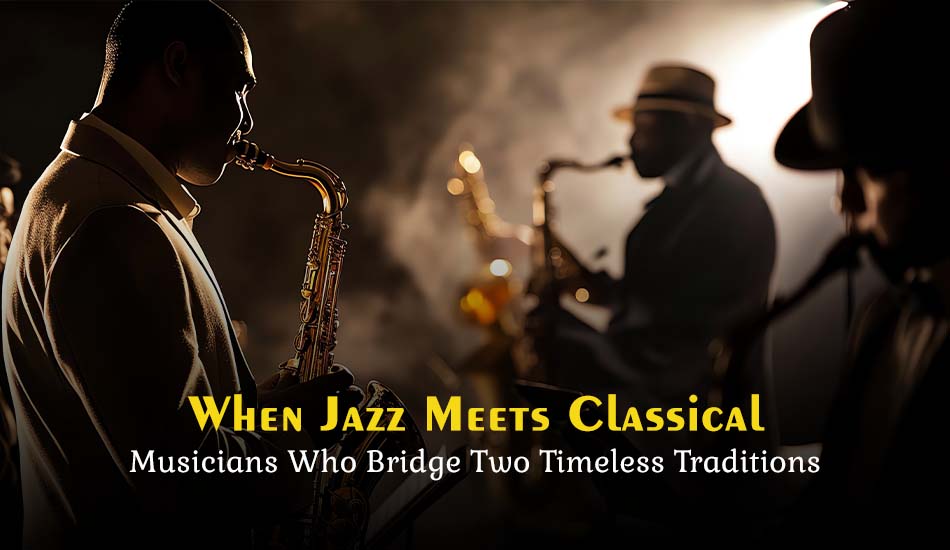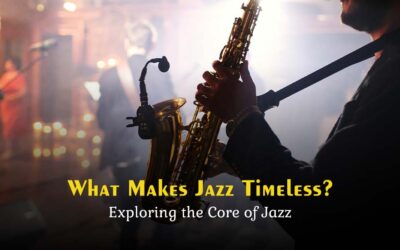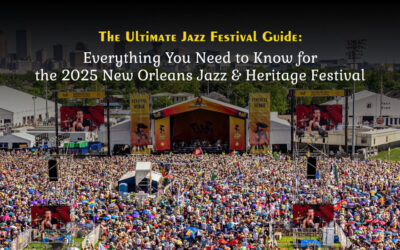Although the borders between jazz and classical music might look well defined, some of the greatest jazz musicians in history have played so freely, so defensively, as to create inspired work that exists somewhere in between. Indeed, the rich history of jazz that’s enhanced by the influence of classical music is some of the most imaginative, expressive , and structurally sophisticated ever recorded. Classical music has been an elemental influence from the start of jazz, from harmonic practice to depth of feeling.
A Brief Historical Context
Jazz and classical music might on the surface seem to be very divergent fields, but they’ve intersected often over the past century. Where jazz was born in African American communities in the early 20th century, built on the foundations of the blues and ragtime, classical music comes with centuries of European tradition in its past. As jazz musicians hopped it up a bit, and extended its sonic range, many of them found their inspiration in the form of classical compositions and its techniques.
Composers as different as George Gershwin, who melded classical structure with jazz harmonies in “Rhapsody in Blue,” and Duke Ellington, who wrote extended orchestral pieces, served as bridges between jazz and classical. This historical twine helped create jazz musicians for generations who’ve taken new ideas and worked them through classical forms.
Technical Influences - Harmony, Form & Orchestration
What is one of the progression between jazz and classical is probably the more harmonic language. Jazz pianists and composers learned from classical music, encountering extended chords, modulations, and counterpoint. It is especially difficult for composers and arrangers in big band and post-bop traditions. Sonata form, fugue motif development, and all classical techniques may be heard in countless jazz tunes.
Moreover, classical instruments and orchestration in jazz recordings are becoming more prevalent. Think about the colors you hear in the arrangements that Gil Evans wrote for Miles Davis’ record Sketches of Spain, which is a great example of classical influence in tone quality and dynamics.
Famous Jazz Musicians Who Have Been Inspired By Classical Music
Some of the best jazz recordings betray a distinctly classical influence. The pianist Bill Evans had, for example, extensively studied classical music and would bring an impressionistic, Debussy-like sensitivity to jazz harmony. A large ensemble composer, Charles Mingus, too, used classical forms and themes in his works.
Wynton Marsalis is another who has excelled in both classical and jazz performance on the trumpet and has played a major role in both realms. Contemporary jazz singers like Esperanza Spalding also tap into classical chamber textures and compositional depth in their own recordings.
Educational Outlook: Teaching Meets Innovation
A lot of jazz musicians today are educated in conservatories and universities where jazz and classical music are taught. This educational base gives you a more intense integration of musical theory, composition and practice.
This two-pronged training provides today’s jazz musicians with a more expansive toolkit to play around with. It also encourages you to appreciate the architecture behind music, something that is deeply rooted in classical traditions. Consequently, jazz improvisation is refined through the knowledge of the classical master.
Case studies in Classical music influenced jazz
There are some seminal works and collaborations that serve as touchstones for this intermingling.
- The careers of Jacques Loussier’s Play Bach Trio and similar ensembles helped stir Bach into a jazz head and released him alive from a classical formaldehyde.
- Jazz mixed with Baroque counterpoint and the grace of chamber music was the hallmark of the Modern Jazz Quartet, led by pianist John Lewis.
- Modern pianist Brad Mehldau is known for his use of classical material and phrasing and lists Brahms and Schubert as influences on his improvisation.
These examples reveal that jazz inspired by classical music is not a niche; it’s a vast, living tradition.
Cross-fertilizations and Interdisciplinary Work in Recent Times
Jazz’s proximity to so-called serious contemporary music is as evident today as ever. Hybrid compositions are played in jazz festivals with chamber ensembles and soloists. String quartets are playing alongside jazz combos, and orchestral commissions for jazz composers are increasingly the norm.
This synthesis has led to some amazing crossover projects as well. As an example, one could point to pianist Dan Tepfer’s Goldberg Variations. Variations which juxtapose Bach’s original masterwork with jazz improvisations on each of its movements. And those projects are great examples of the back-and-forth between genres.
Cultural and Social Contexts for Jazz-Classical Fusion
The free interplay of culture has long been the driving force behind musical breakthroughs. Jazz is a product of a particular social reality, and the combination with serious music points to a wish to overcome limitations. It is more than often a matter of choice, it’s more than often not a choice, but something stronger – a statement of artistic and even cultural identity.
In a reality that seems to prize tradition even as it searches for transformation, marrying jazz and classical becomes a way for artists to honor the past while finding new ways for the genre to move. This is particularly so for contemporary jazz vocalists who wish to paint richer stories with a broader musical palette.
The Emotional Vocabulary: How Classical Sensibility Enriches Jazz Expression
Classical music lends an enormous wealth of emotional nuance, structure and restraint, those qualities that can expand the expressive language of jazz. For vocalists, reaching back to classical phrasing and breath control opens up more textured, emotionally rich performances.
In combining the freedom of jazz with the restrictions of classical music, musicians open up new worlds. Such an expanded emotional lexicon enables listeners to approach music in a deeper, more durable way.
Conclusion
Jazz inspired by classical music remains one of the most innovative and emotionally rewarding paths in contemporary music. From harmonic obscurity to compositional beauty, this marriage brings new life to both genres and forces artists not to rest on their laurels. Whether via paradigm-shifting instrumental works or the vivid narrations of modern jazz singers, the collision of jazz and classical remains a force to be harnessed in the sound of now.
Whether you are delving into the greatest jazz albums or are searching for new inspiration, look to the place where classical music and jazz converge. It’s where the past dances with the present and where the future of music keeps changing.




